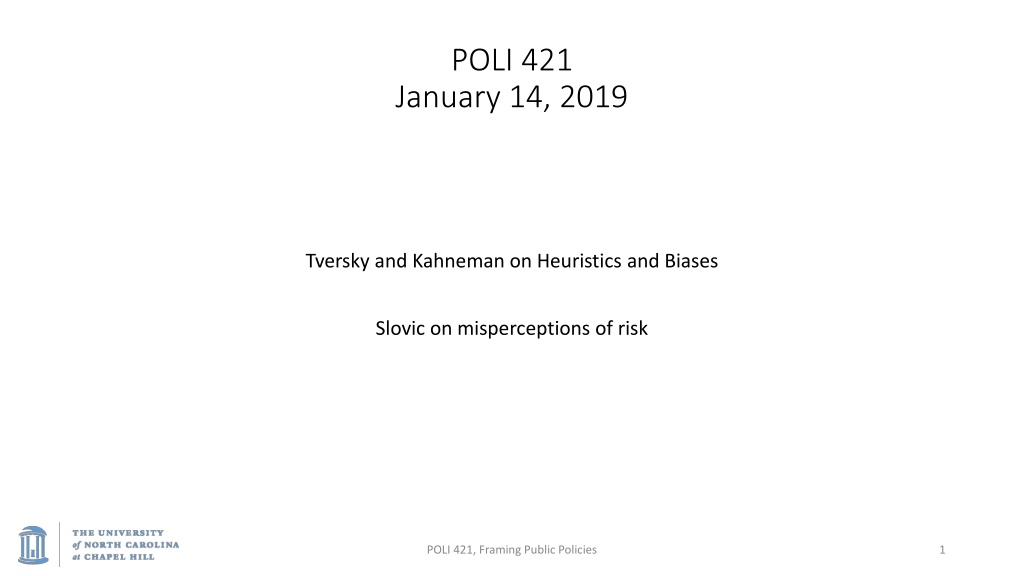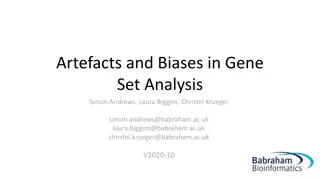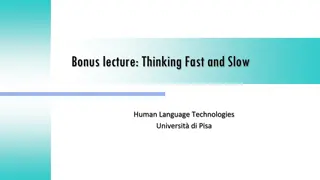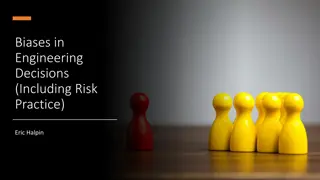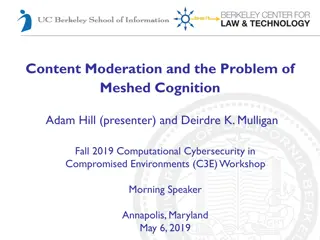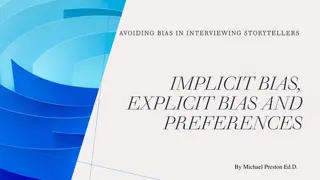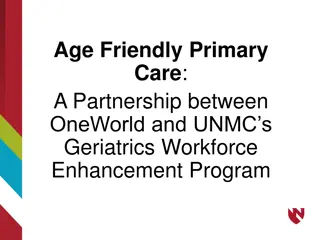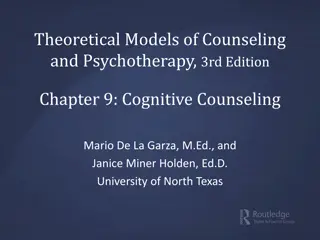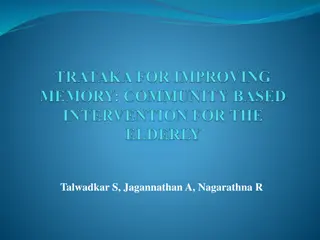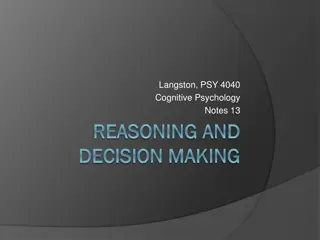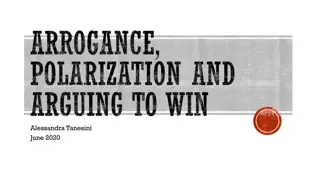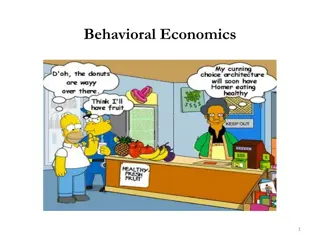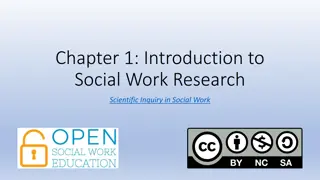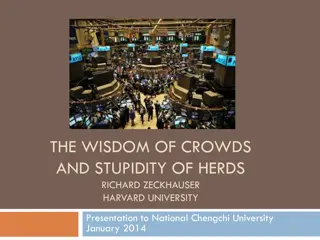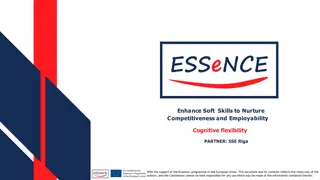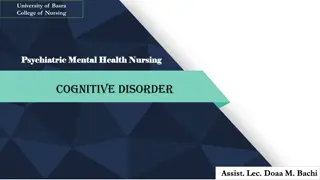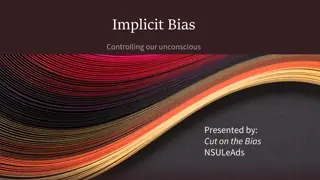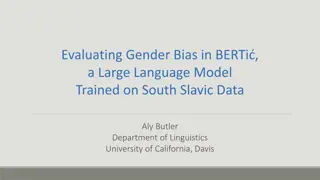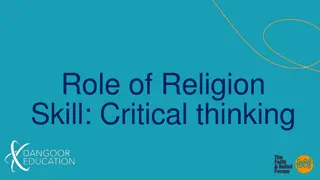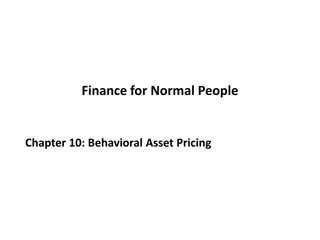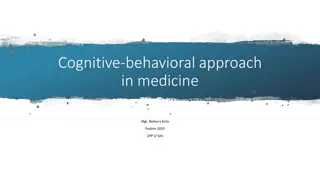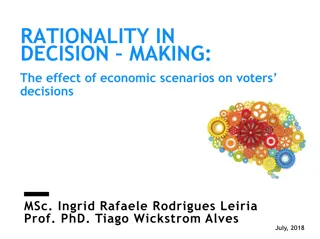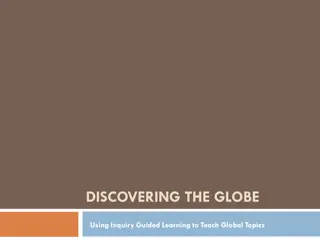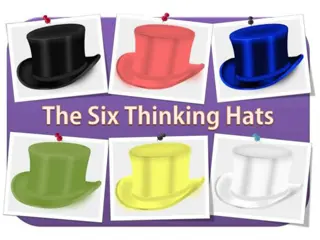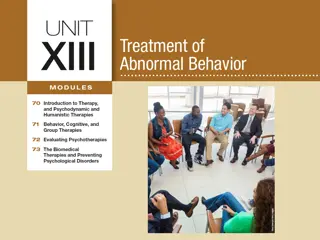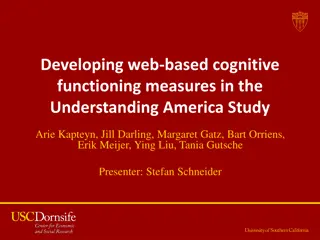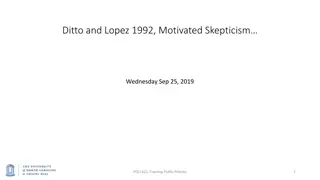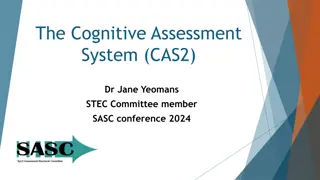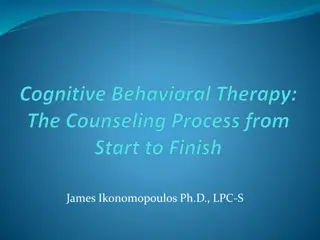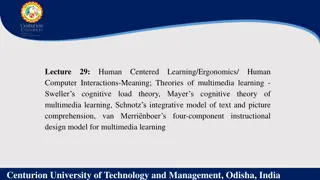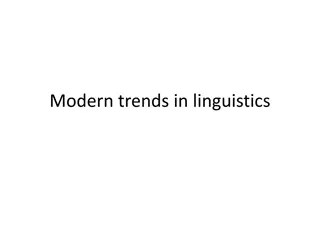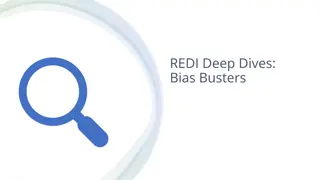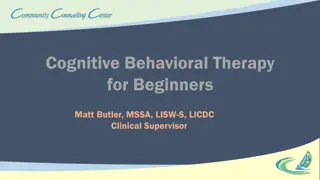Understanding Cognitive Biases in Decision Making
Explore Tversky and Kahneman's research on heuristics and biases, Slovic's insights on risk misperceptions, and the implications of cognitive biases in decision-making processes. Delve into topics such as representativeness, availability bias, anchoring, and Prospect Theory by Kahneman and Tversky. Gain a deeper understanding of how cognitive biases influence our assessments of probability, perception of risks, and decision outcomes in public policy framing.
Uploaded on Sep 30, 2024 | 0 Views
Download Presentation

Please find below an Image/Link to download the presentation.
The content on the website is provided AS IS for your information and personal use only. It may not be sold, licensed, or shared on other websites without obtaining consent from the author. Download presentation by click this link. If you encounter any issues during the download, it is possible that the publisher has removed the file from their server.
E N D
Presentation Transcript
POLI 421 January 14, 2019 Tversky and Kahneman on Heuristics and Biases Slovic on misperceptions of risk POLI 421, Framing Public Policies 1
What are the odds of an uncertain event? Fully rational: How would you do it? Actual people: How do we really do it? Objective v. subjective assessments of probability. POLI 421, Framing Public Policies 2
Things people do wrong / characteristics of human cognition: 1. Representativeness: from my limited knowledge, or from a sample, can I extrapolate to a larger situation? 2. Availability: What is most easily brought to mind? 3. Anchoring: Points of reference POLI 421, Framing Public Policies 3
Representativeness Insensitivity to prior probability / base rates A person is shy. Are they more likely a librarian or a teacher? What if there are 100 x more teachers than librarians? Insensitivity to sample size / quality of estimates; small samples have high variance. Misconceptions of chance: We don t understand how to flip a coin; gambler s fallacy Illusion of validity: we have too much confidence when making choices based on very little information Regression to the mean: people don t even know what this means POLI 421, Framing Public Policies 4
Availability bias Things close to our memory / easily available come to mind more easily and therefore we pay more attention to them. (Note: lots of framing is about priming making the person think about something first, which makes certain things more cognitively available or near the surface and therefore affects how they respond.) POLI 421, Framing Public Policies 5
Anchoring We start with a point of reference, and then adjust (insufficiently) from there. Points of reference have an out-sized impact on estimates. (Remember this if you buy a car. The dealer will tell you how low the price is, compared to the retail price , which is made up and too high.) POLI 421, Framing Public Policies 6
Also by Kahneman and Tversky Prospect Theory Domain of gains: be risk-acceptant Domain of losses: be risk-averse That is, people will take more risks / behave differently when they might win something, but act the opposite when the risk is that they might lose something they already possess. Apply this to the Obama health care debate. Is US health care the best in the world? Or do we have a scandal of too many uninsured? (Hint: the first frame puts us in the frame of mind that we have something to lose; the second, that we have little to lose and should take a risk to make a significant gain.) POLI 421, Framing Public Policies 7
Slovic: Perceived risk of various things Why are we over-afraid of nuclear power? Why are we under-afraid of smoking? POLI 421, Framing Public Policies 8
Familiar v. unfamiliar; dread v. mundane risks POLI 421, Framing Public Policies 9
Controllable v. not; Observable v. not POLI 421, Framing Public Policies 10
Things that make us over-estimate risk Unknown (invisible, delayed, unfamiliar) Dread (scary!) Uncontrollable (sit on an airplane someone else drives v. drive your car) Inequitable (victims did not deserve it; v. they took a known risk) Catastrophic v. individual consequence Likely to affect future generations v. only oneself Voluntary v. involuntary POLI 421, Framing Public Policies 11
Do we see this in politics? What fears are manipulated? Odds of violent crime? Odds of someone on work release will commit a crime? Stranger-attacks v. dangers from loved ones or family members Think of more examples; how do people do this? Why do they manipulate fear? POLI 421, Framing Public Policies 12
